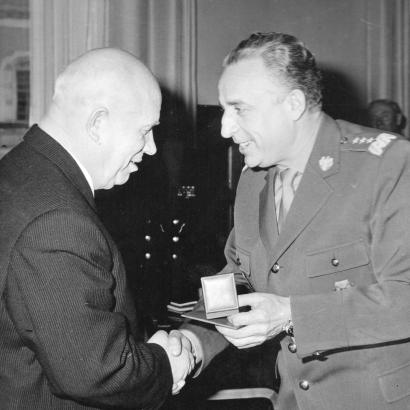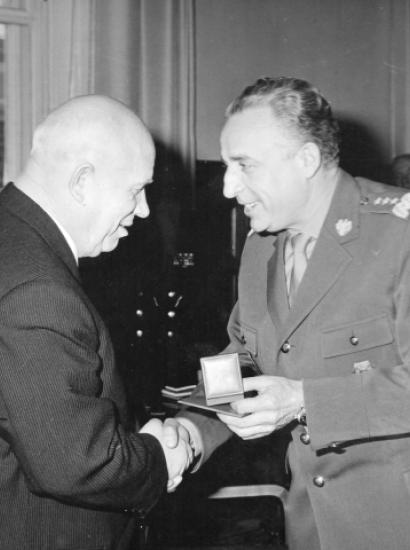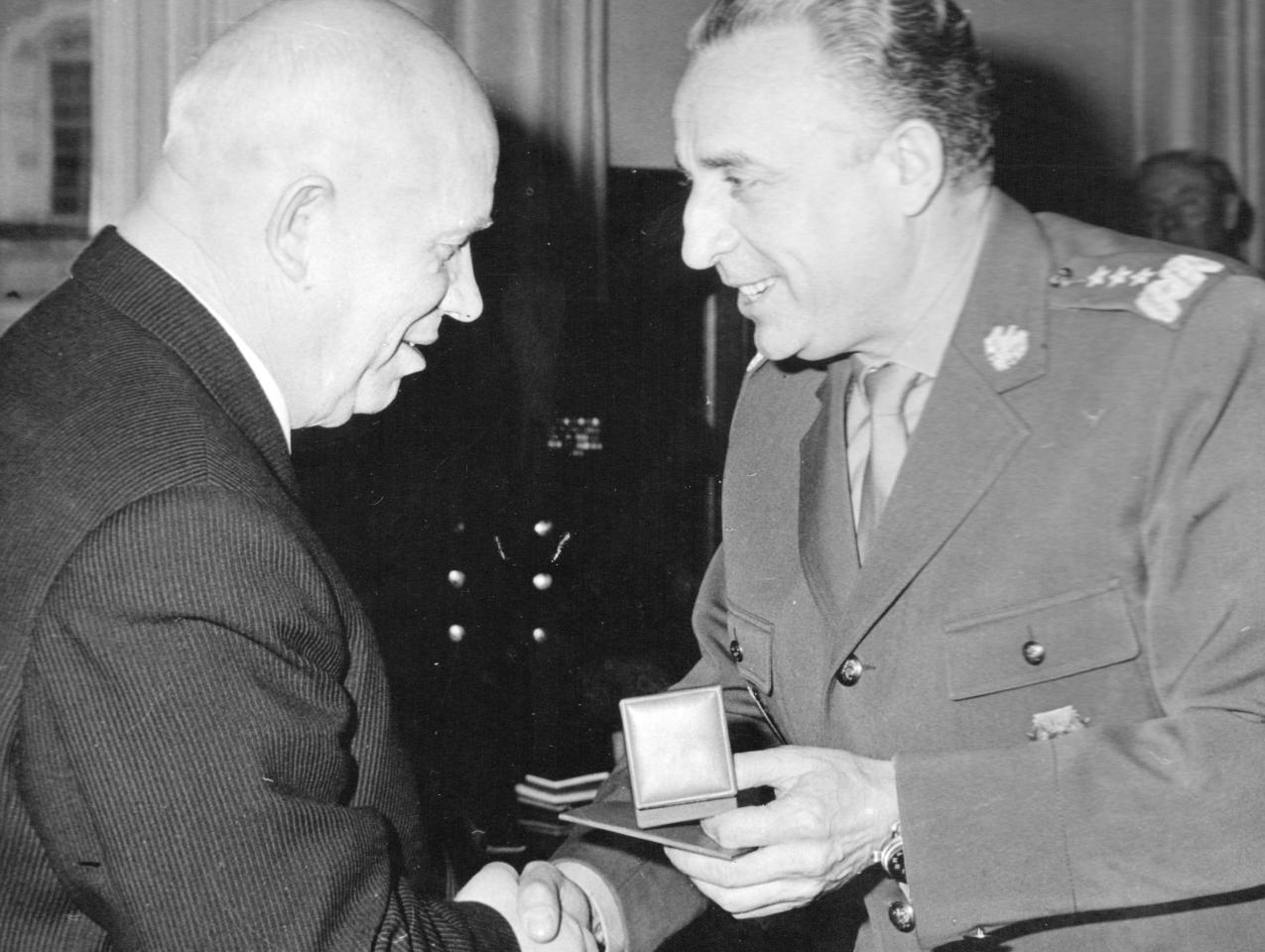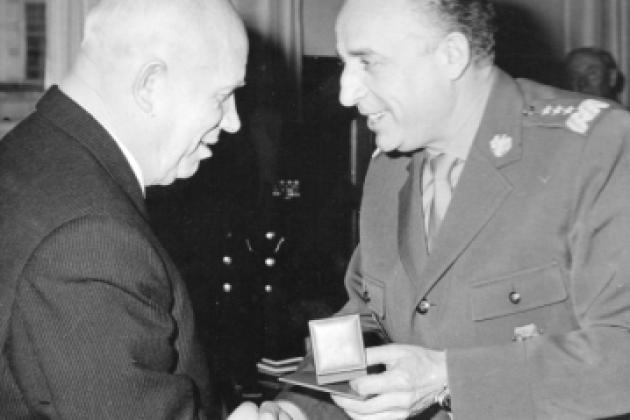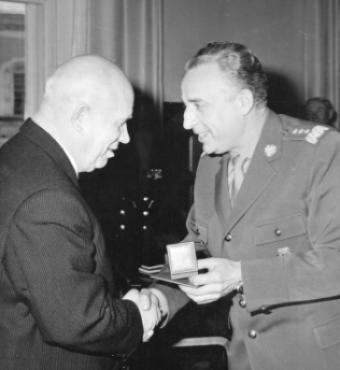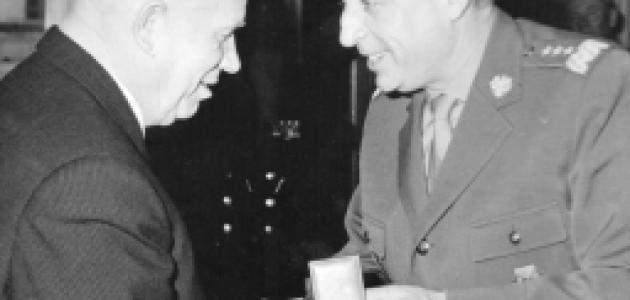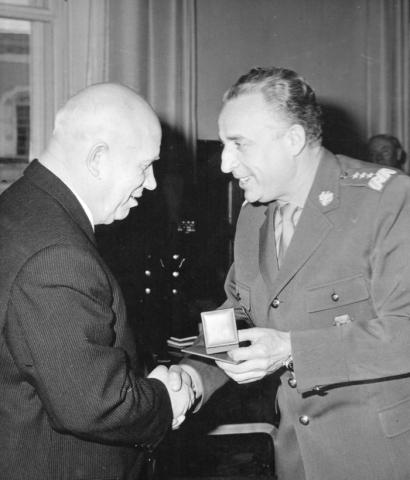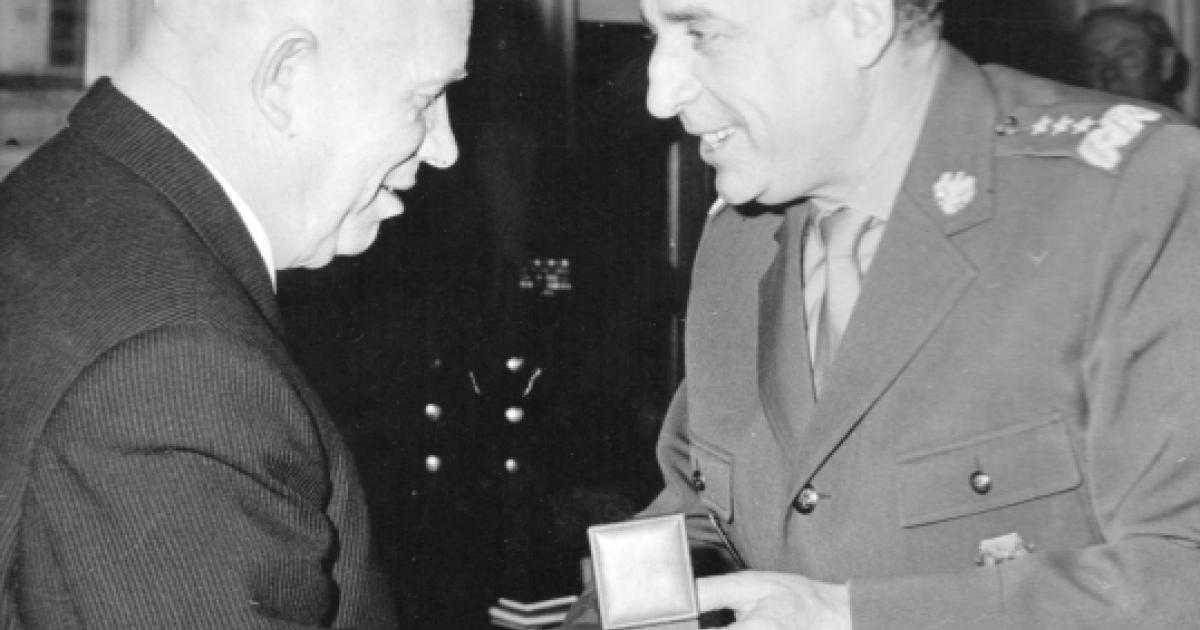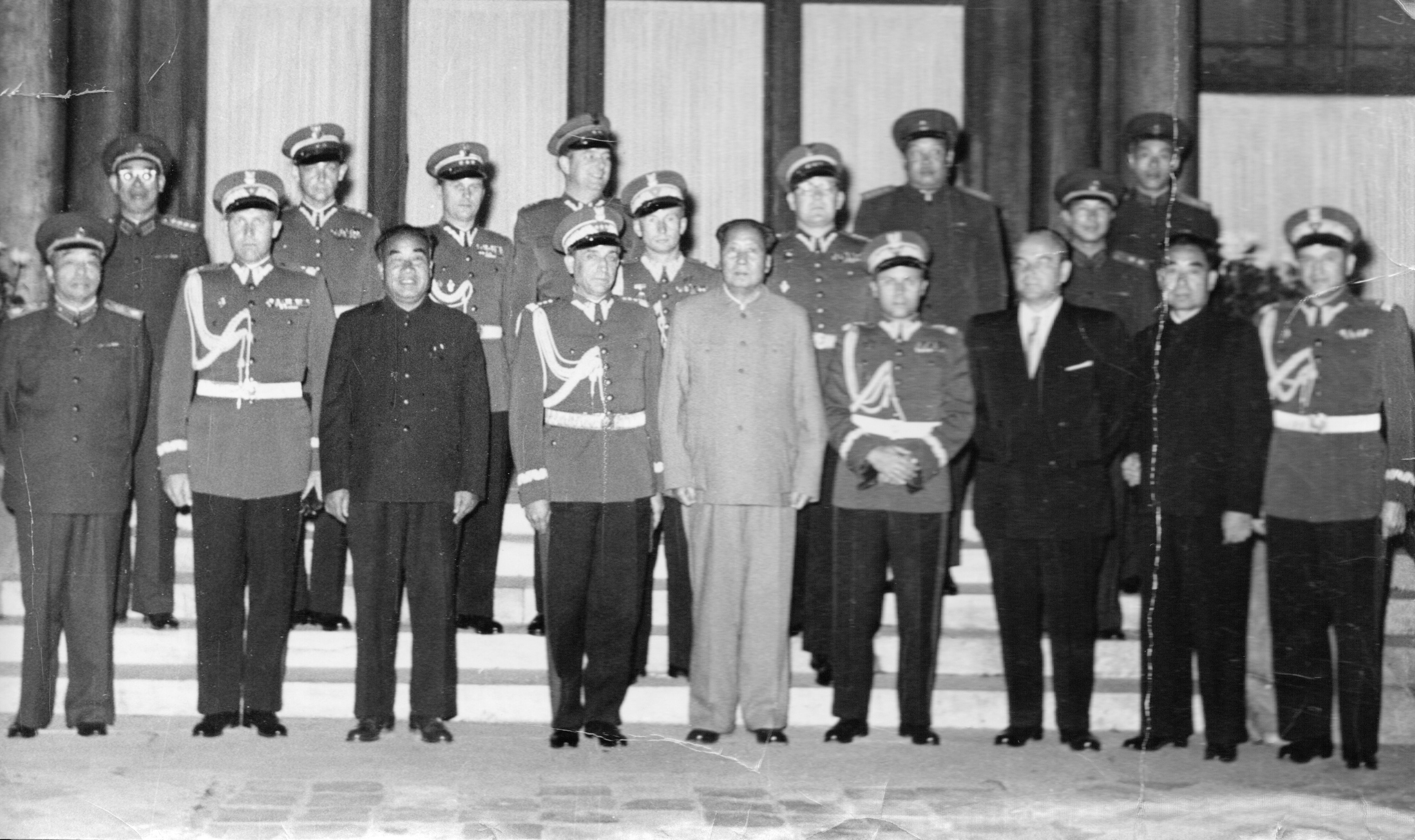
Above: Marian Spychalski with Mao Zedong (center of the first row), Beijing, September 1957.
A large increment of papers and photographs of Marian Spychalski, one of the “founding fathers” of Communist Poland and one of the most prominent Polish politicians of the 1944-1968 period, has now been added to the Spychalski collection received eight years ago.
Born in 1906 in Łódź, Poland’s second-largest city, Spychalski was connected with the communist movement since his years as architecture student in Warsaw. During the 1930s, he was one of the most promising young architects and urban planners in Poland, winner of several national and international competitions and awards. During the war, Spychalski headed the intelligence activities of two successive armed communist underground organization—Gwardia Ludowa (People’s Guard) and Armia Ludowa (People’s Army)—the principal aim of which was not only fighting the Germans but preparing the ground for the eventual “liberation” by the Soviets. A major part of this effort was gathering intelligence and sabotaging the anti-Nazi struggle of the much larger and vastly more popular pro-Allied, national underground, Armia Krajowa (Home Army). Spychalski spent the final year of the war with the Soviet military forces, and their Polish Communist-led units, quickly advancing to the rank of general. He also served briefly as mayor of Warsaw, the capital city that had been virtually leveled by the Germans. Later, he was appointed as minister responsible for post-war reconstruction of Poland, a position he held until the end of 1949. His arrest in 1950 was part of a broader Soviet plan to rid Polish Communist leadership of people with suspected or potential Western or “nationalist” tendencies. Spychalski was imprisoned, brutally interrogated before admitting everything he was accused of. Fortunately for him, and thousands of others, the death of Stalin and Nikita Khrushchev’s ascent to power brought about a gradual easing of the repressive regime throughout the Soviet bloc. As the result of this “thaw,” Spychalski was released from prison in early 1956. A few months later he was completely “rehabilitated”, returned to the Politburo, and made minister of defense —replacing Marshal Konstantin Rokossovsky, who along with thousands of other Soviet officers overseeing the Polish armed forces, was recalled to Soviet Russia. Spychalski served as defense minister until 1968, when he became the chairman of the council of state—effectively the president of Communiust Poland—before ending his government career in December 1970. He spent the final decade of his life in retirement writing his memoirs and died in Warsaw in 1980.
Among the papers added to the collection are manuscripts focused on the architectural history of Warsaw from the 1930s through the 1950s. These supplement the papers the Library and Archives received eight years earlier. Even more interesting are extensive reminiscences from his work as one of the top commanders of the wartime communist pro-Soviet underground. Here, of course, the typescripts need to be read with considerable caution because they were written in Communist Poland by a conflicted man, someone who throughout his life tried to accomplish the impossible task of being a Polish patriot and a true believing Communist. Spychalski chronicles many, but not all, of the major events he witnessed or participated in. Written more than thirty years after the events, it is a story written by an educated, committed Marxist, a true believer, though not a zealot. It is not only an eyewitness account by a significant player in the historical process, but also a primary source for the study of the tortured intellectual meanders of Polish Communists.
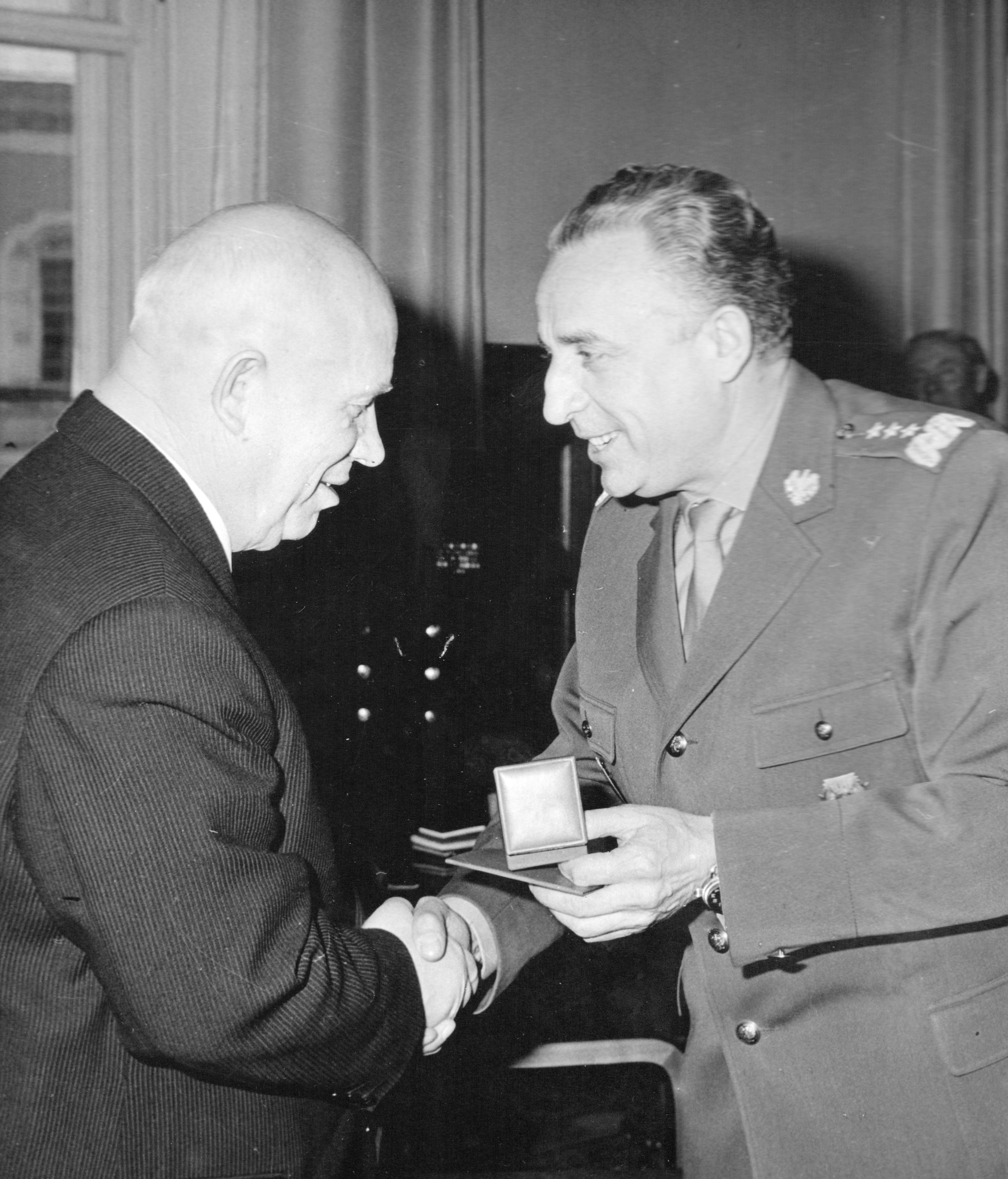
The increment to the collection includes six manuscript boxes of photographs, mostly from official foreign visits during the 1950s and the 1960s. Spychalski’s voyages to such countries as Algeria, Austria, Belgium, China, Czechoslovakia, East Germany, Mongolia, and Yugoslavia are well covered, as are much more frequent visits to Moscow and various Soviet republics. There are also some photographs, which were never considered for public release, from vacations in exclusive Black Sea resorts and fishing and hunting expeditions with members of the international communist elite. One set, for example, covers a wild boar hunt in Europe’s largest surviving primeval forest of Białowieża (Belavezha), straddling the Polish-Soviet border. This was a favorite hunting ground of the Polish-Lithuanian monarchs, then the Russian tsars, and later the top Communist leaders of Poland and the USSR, as well as their guests. Nikita Khrushchev was particularly fond of hunting in Białowieża. He hunted on both sides of the border and the Spychalski photos illustrate one such hunt. In the 1950s, Khrushchev had a hunting lodge—or more accurately, a country palace—built in the forest, near the Belarusian hamlet of Viskuli, several miles from the Polish border. He visited here with his associates and guests, and his successors did as well. Ironically, Visculi became famous much later as the place where the Soviet Union ended: on December 8, 1991, the leaders of Russia, Ukraine, and Belarus signed an agreement in Viskuli to dissolve the USSR.
The Hoover Institution is home to the largest and most comprehensive archival holdings on twentieth-century Poland outside of Poland itself. Though the most extensive documentation dates to the period of World War II, the bulk of recent acquisitions has been from the period of 1945−1989, the years of the Polish People’s Republic. The papers of Marian Spychalski, along with the papers of many other prominent Polish Communists and “fellow travelers” already in the Archives, are one of the principal elements of Hoover’s expanding historical research base on People’s Poland and the Soviet domination of Eastern Europe.
Maciej Siekierski siekierski@stanford.edu




